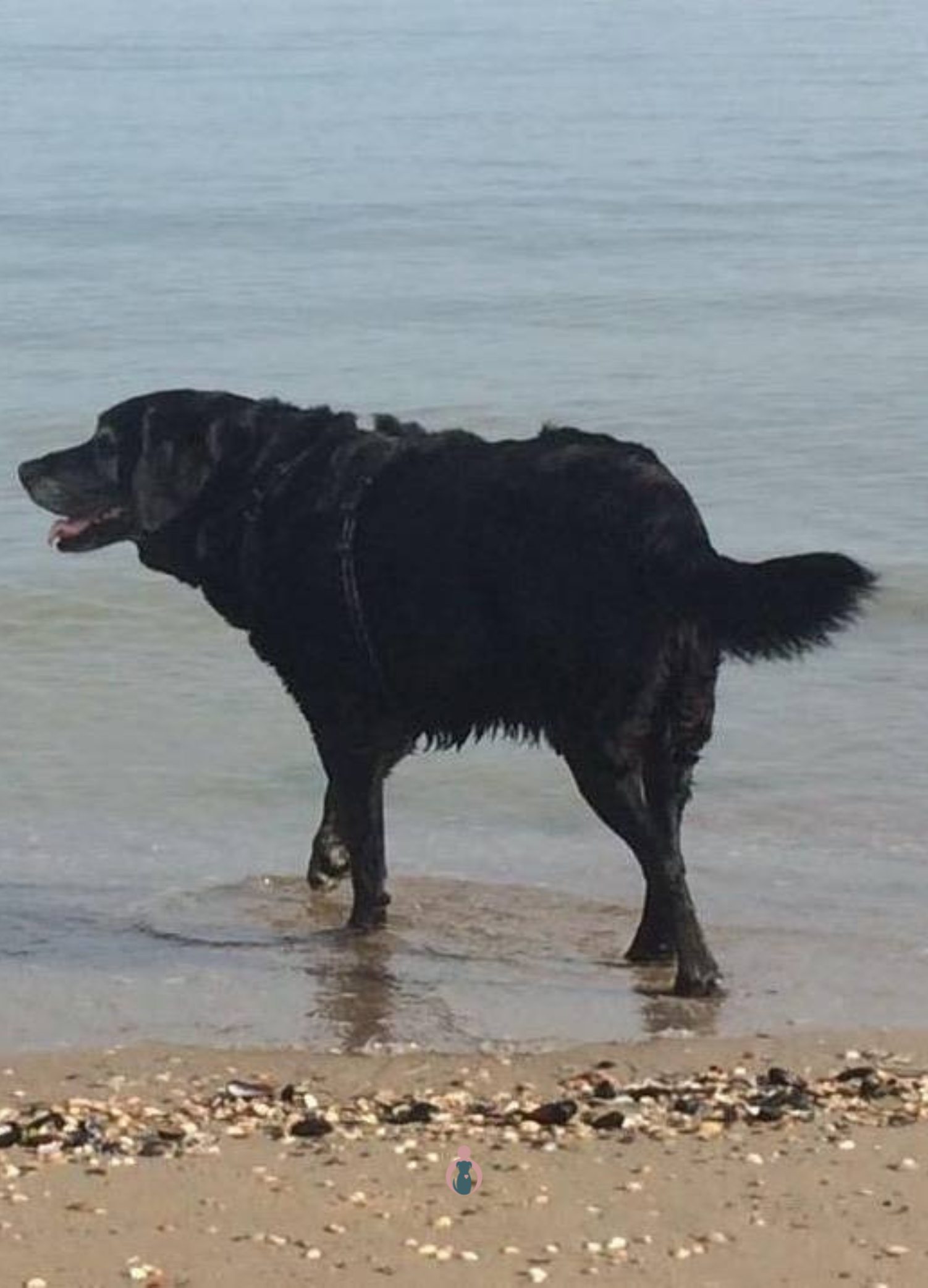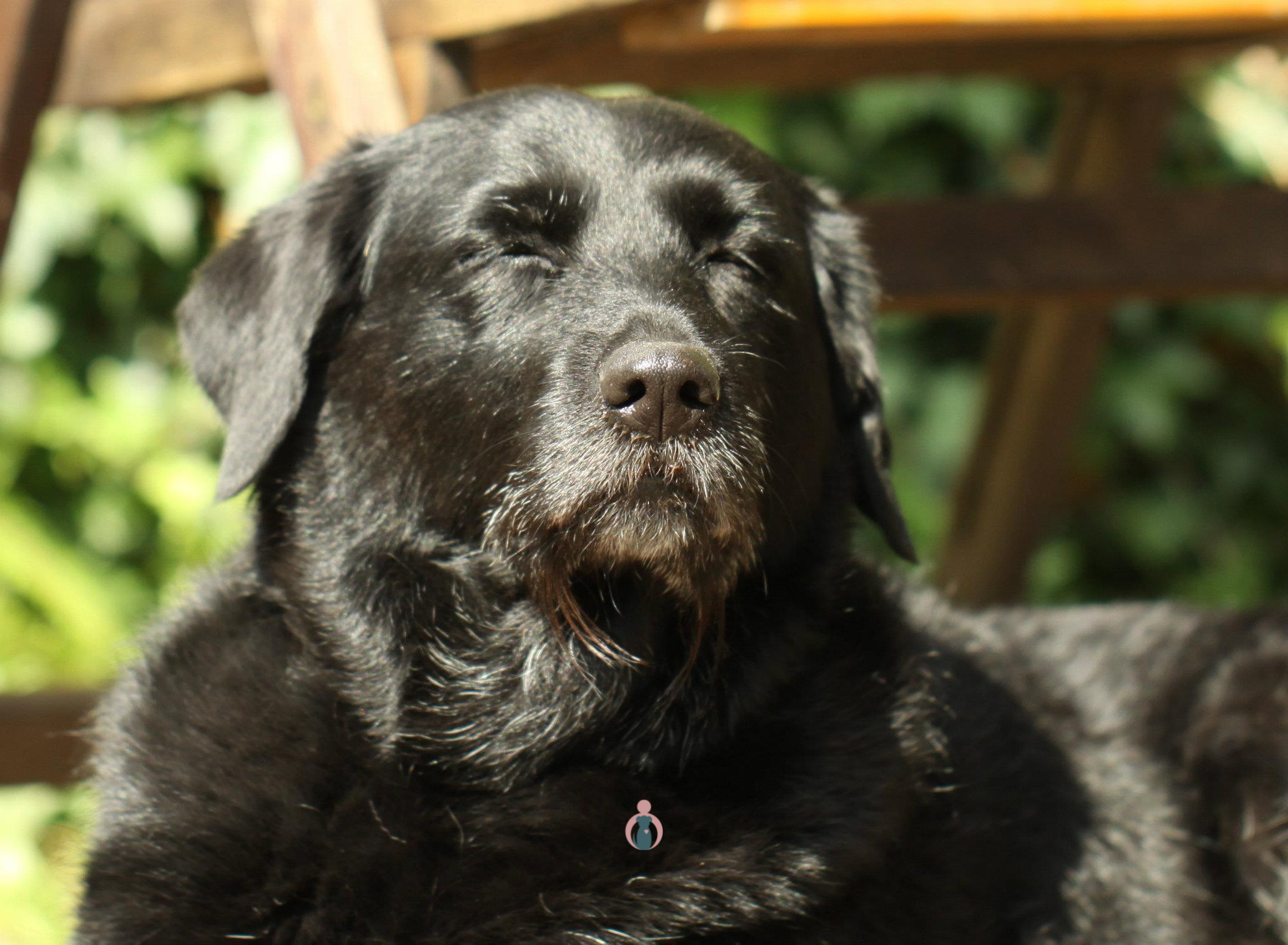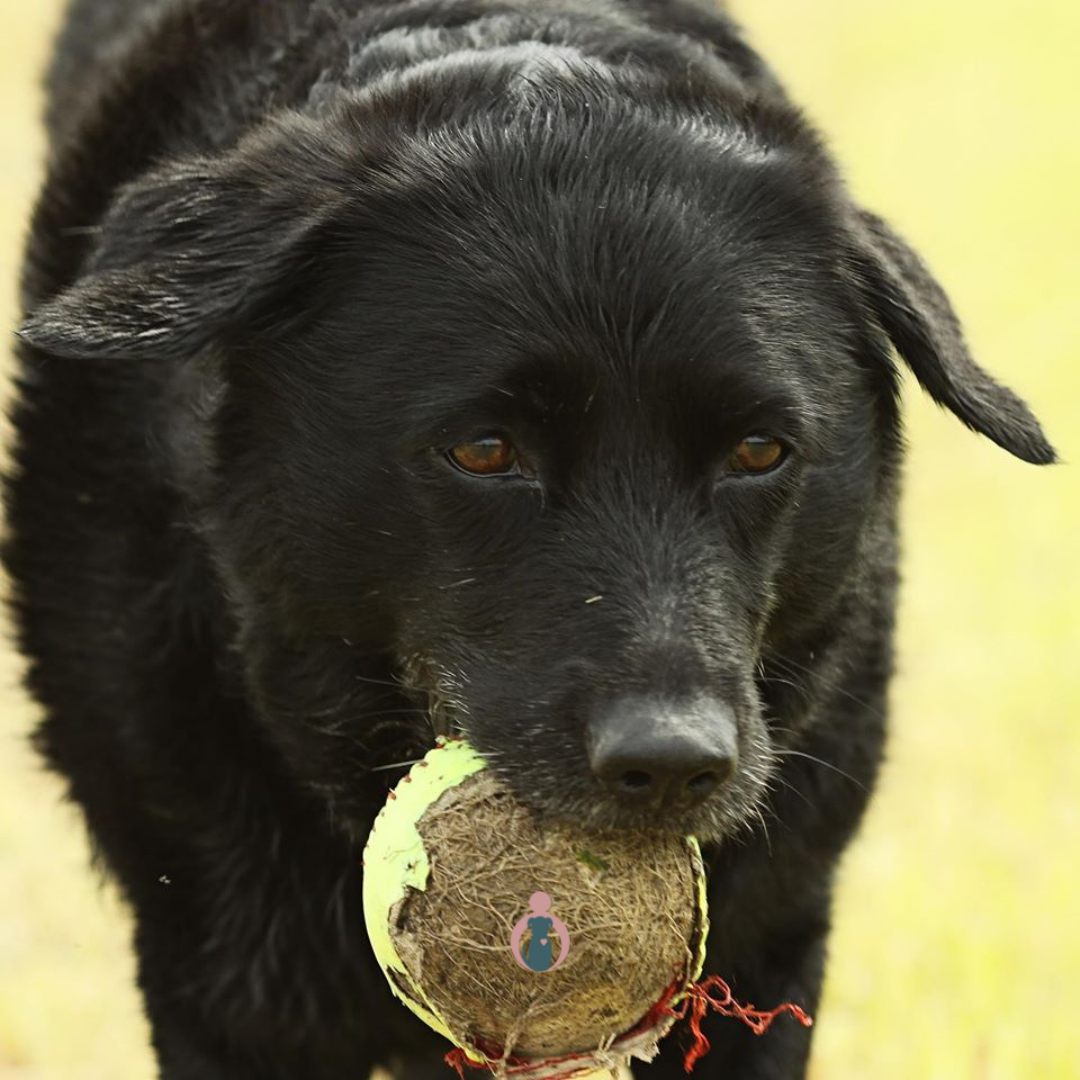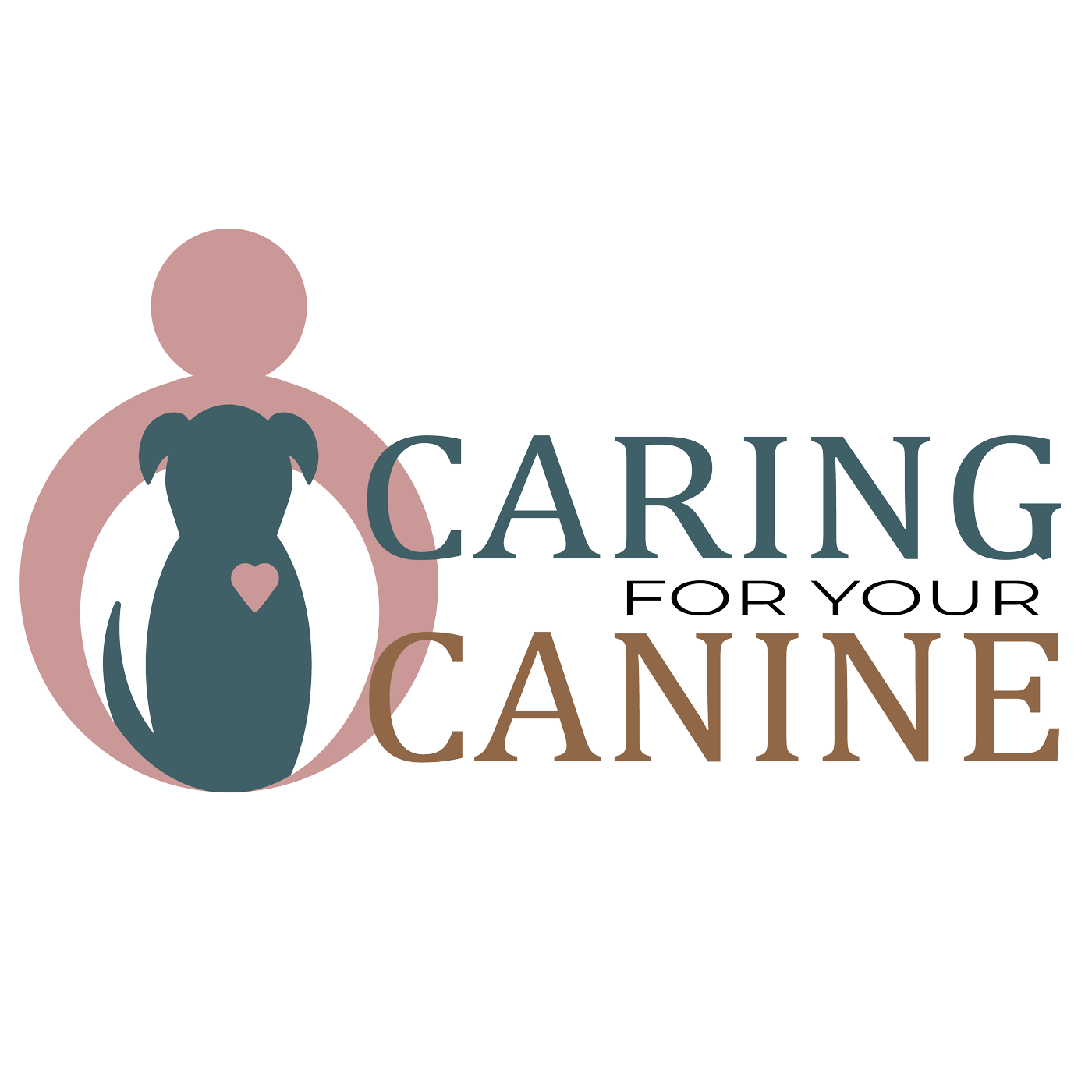Super senior:
The Gold in the Gray
Let’s work on your dog’s future
Super senior:
The Gold in the Gray
Let’s work on your dog’s future
Your senior deserves the very best
The Caring For Your Canine Academy was created to help your dog age in the healthiest way possible.
When we ask owners what they consider most important for their dog, these three aspects always come up:
- Being pain-free
- Getting exercise/ maintaining muscle strength
- Quality of life
In this course we will cover these in detail. We will discuss how to recognize the very first subtle signs that pain may be present, and what you as the owner can do about it (hint: a lot more than you think!).
In the module on movement we will delve into how to observe and recognize more signs of discomfort in your dog, what is attainable with simple bodywork techniques, and we will discuss various muscle strength exercises in a playful, understandable way.
We will cover eyesight and hearing, and how we can improve quality of life when they start to decline. We will also examine methods and ideas for keeping life fun and interesting for your dog.
Using a holistic approach, we will explore how all of this is connected, how one element reinforces another, and how we can utilize this reality. You will learn to read, understand and help your dog even better, and you will do it together! This teamwork builds confidence and strengthens the bond between you and your dog even more.

Who is this course for?
Is this course only for people with aging or elderly dogs? Absolutely not! So, when is this course right for you?
You are dedicated, and your love for your dog is very important to you. You want to do everything you can to make his life as pleasant as possible and keep him with you, fit and healthy, for as long as possible.
You understand that the cause of many problems often begins very insidiously at a young age.
You are interested and eager to know how things work.
You want sound information and explanations about how problems arise and what you can do to prevent them.
You also want accurate and in-depth information about what you can do when problems arise, information from a knowledgeable expert you can trust.
If you recognize yourself above, this course is for you, whether your dog is only three or already thirteen years old!
What will it bring you?
After attending the course, you will have a wealth of knowledge and practical skills to help keep your aging dog thriving. You will better understand the aging process in dogs, including insights from Traditional Chinese Veterinary Medicine. You will have new skills in conscious touch techniques, allowing you to help your dog with pain and bring him deep relaxation. You will have easy exercises to improve your dog’s mobility. You will know more about mental stimulation, and with insights on nutrition and superfoods, you will be able to enrich your dog’s daily life further and promote vitality. You will know more about common conditions such as osteoarthritis and canine dementia and how to proceed if this is something your dog is dealing with.
At the end of this course, you will have increased your knowledge and skills enormously and built a stronger bond with your beloved buddy, deeply enriching both your lives.
The Gold in the Gray
– the modules –

Module 1 | Introduction
This first module begins with an overview of what we might observe as our dog ages. We compare dog and human age and look at aging from a different perspective: Traditional Chinese Veterinary Medicine (TCD).
We discuss a few concerns where preventive care is very important, even indispensable, to detect problems early.
Furthermore, we look a little deeper into the relationship between aging and possibly experiencing pain. You will get tools to better assess whether something is off, and we explain why you, as the person who lives with your dog every day, can play a very important role here. This gives you a framework for talking to health care providers, such as the regular veterinarian, animal physical therapists, balance and coordination trainers, etc.
This module is an overview and a good introduction to the format of the course.

Module 2 | Touch
In this module, we will begin to touch our dog intentionally. We all touch our dogs daily, pet, hug, and cuddle, often without thinking about what our hands are doing. We are going to change that because touching can be so much more if we consciously stop and think about what we are doing. You could say: We are going to pet with intention.
Don’t worry—you don’t have to memorize muscles, tendons, and bones. We do show you some anatomical landmarks so you know where to touch your dog’s body, but they are easy to find and remember. Furthermore, we use the fascia, the subcutaneous connective tissue. In this module, you’ll learn exactly what that is and how important it is.
The techniques we teach are simple to follow, and you don’t need any experience. If you can pet—and we all can—you can learn the techniques in this module.
Besides the wonderful relaxation you can give your dog with the knowledge and techniques from this module, you will find that your bond with your dog is greatly deepened by this kind of touching. One student said, “I never expected my dog to come and ask me for a session. It has become my moment of peace and tranquility, and this way of being together is priceless!”

Module 3 | Moving
In this module, we will look at proper exercise and what it takes.
Our dogs need exercise, but how much and what type of exercise can change as they age. Habits and patterns that are not conducive to ease of movement can also creep in unnoticed. And that’s what we want: to keep our dog moving easily for as long as possible.
But this is not just a matter of muscles, tendons, and ligaments; the nervous system also plays an important role. We will discuss this in detail.
You will also be given a series of easy exercises to do with your dog. These exercises are for the muscles, joints, and nervous system. Some of the exercises may seem very simple, but please do not underestimate their effect. The power is in the basics!
Everything is explained in detail with videos you can watch as often as you like. There are also written instructions you can read at your leisure. With these exercises, you can easily create a simple and fun fitness program for your dog that doesn’t take more than a few minutes a day.
By the end of this module, you will have a deeper understanding of how and why to exercise and simple but effective exercises to keep your dog’s muscles and coordination strong.

Module 4 | Enrichment
This is possibly one of the most fun modules in the course!
We’ll discuss what enrichment is and why it’s important – and fun! – to engage in it.
Indeed, the effect of providing enrichment activities goes far beyond “just” doing games or using a snuffle mat (although that can certainly be part of it).
Various forms of enrichment stimulate the formation of additional nerve connections in the brain, and you can’t have enough of those!
In addition, enrichment activities promote a whole cascade of feel-good hormones released by the dog’s nervous system. This has a wonderful effect on our dog’s body and total well-being.
You’ll learn all about that, and we’ll give you suggestions for different things you can do at home. This module is a solid starting point, and once you start intentionally doing enrichment activities, this will spark more ideas for fun new games.
Some students find they can no longer go through a hardware or toy store without seeing a dog game in everything!
Warning: this module can be addictive. 😉

Module 5 | Nutrition
This is a very large module with a lot of information. Nutrition is a big topic!
First, we will describe aspects of nutrition at the cellular level and explain some of the things you can read on a pet food label.
We provide some background on how nutrition is viewed in Traditional Chinese Medicine and how we can use that knowledge as the nutritional needs of our aging dog change.
We explain what oxidative stress is and how we can help with food choices. We discuss some commonly used supplements and whether they can be useful or not.
The role of the gut flora and how we can support good gut bacteria is also discussed. Furthermore, we discuss which human foods are unsafe and which are actually superfoods that we love to use. In addition to the text’s discussion, you will find an e-book about these to read at your convenience.
By the end of this module, you will know much more about nutrition and its importance for the body. You will also have simple tips about little things you can do that have a lot of impact. The information in this module is useful for everyone, whether you feed kibble or canned food or give fresh and/or raw food.

Module 6 | Osteoarthritis
In this module, we will examine a very common condition in older dogs: osteoarthritis.
Osteoarthritis is a complex disease that involves much more than “simple wear and tear.” The onset of osteoarthritis often occurs at a young age: it is estimated that 40% of dogs over 2 years of age already have an onset of osteoarthritis!
We will delve deeper into pain and how it is perceived, how the intricacies of pain perception can work against us, and how we can take advantage of them to intervene therapeutically.
We will debunk a common misunderstanding and discuss a number of interventions. Many of these interventions can be used preventatively, which gives us the chance to delay the onset of osteoarthritis and possibly reduce its severity.
We take a look at commonly used supplements, and the role of pain medication is discussed.
An important conclusion of this module is that if you think “my dog really is getting older now” don’t simply take that as a given. First, go and investigate whether something else might be going on with your dog. Because the sooner we know something is not quite right, the better we can help. The material in this module will give you a deeper understanding of the unfortunately quite common problem of osteoarthritis. You will also have very practical tools for possible prevention, as well as measures you can take to keep your dog as pain-free and with as much quality of life as possible.

Module 7 | Canine cognitive decline (dementia)
This module covers another common situation in older dogs: deteriorating mental abilities. This is a complex issue; we still need to learn a lot about brain functioning. We know a lot, but there is also a lot we don’t know yet.
We will explain what is currently known and discuss symptoms and diagnostics (and their limitations).
We will discuss what is medically possible when there is a clear suspicion of dementia so you can have an effective conversation with your veterinarian. Your role and observation as an owner at home are indispensable, especially when dementia is suspected!
Next, we focus mainly on the first subtle signs and what we can do as owners. As with most diseases and problems, the earlier we intervene, the greater our chance of success. Here lies the most significant gain and our best opportunities. You’ll also find a scoring form in this module, looking at various facets of daily life. This will help you get a somewhat objective picture of what may or may not be happening with your dog.
We will discuss several things that may help, from supplements and lifestyle interventions to medication. An interplay of different modes of intervention usually gives the best results. After this module, you will have a deeper understanding and tools to advocate for your dog effectively.

Module 8 | The last phase
This is a module on a difficult subject that needs to be discussed. Because, in one way or another, we all have to deal with it. No matter how hard we try or how many measures we take, there comes a time when we realize that our dog has most likely passed the halfway mark of his life, and that at some point a goodbye is coming. And leading up to that, there are things we need to consider and choices we need to make. In this module, we want to give you some guidance for these difficult choices.
The fact is that the vast majority of dogs leave life through euthanasia. Around the process of euthanasia, you may have questions, and there are things to consider.
This module addresses quality of life: what is it, how do you know it’s still good enough, how do you determine when it’s time to say goodbye.
We will also discuss the procedure itself, how it is done, and possible questions you may have for your veterinarian. We will also discuss mourning and practical matters to consider after your dog has passed.
This module supports you in making good end-of-life choices. After all, we want quality of life for our dog but also a peaceful end. This module supports you in those aspects.

Module 9 | Conclusion
This module contains all the downloads from the entire course. Here you will find all checklists, questionnaires, e-books, score forms, and overviews. The meditations from Module 8 are also available here. Everything in one place, for your convenience!
Happy Canines

Leida, the woman with the magic hands!
About 7 years ago I first came to Leida with my then guide dog Jones.
He had had 2 incidents with other dogs who had attacked him, and I noticed he was different than usual.
Since I had experience with chiropractic care from horses, I contacted Leida.
Fortunately I was able to get in touch quickly and it turned out it was a good thing that she saw him.
There were quite a few vertebrae blocked and he was clearly suffering from that.
From then on I visited her regularly. Because Jones was a great guide dog and I wanted to keep him fit as long as possible.
And I succeeded! Thanks to Leida’s good care he could do his work for more than 4 years without any worries.
The dogs absolutely love coming to her. It seems like they know she is going to help them.
Also Alvin, the guide dog of a good friend is still able to do his job thanks to Leida’s wonderful work!
I like to say: there is more between heaven and earth than just regular veterinary medicine and Leida is a very special example of that!
She really looks at the whole animal and with all the options she has to treat dogs she can solve a lot of problems!
My current guide dog Ginger is already a fan of hers too! Because I gladly visit her once a year to have my wonderful dog checked, because prevention is better than cure :-))
So awesome that she wants to share all her accumulated knowledge about the aging dog with us now!
Sandra and Jones

We are very happy that we got to bring our Labrador Joy to Leida! We thought she was just getting older, but it turned out she had problems with her paws and her back! Thanks to the treatments, the medication and the supplements, she soon felt a lot better. The home exercises we did with her made her even stronger, which was something we never expected! Now at 10 years old she is happier and more fit than when she was eight, who would have thought!
Karin and Labrador Joy

Life with our dog Lola is so special and becomes more fun and profoundly meaningful as she gets older. It is very important to us that a veterinarian has a comprehensive holistic view of an animal and their health. Leida has extensive knowledge of acupuncture, chiropractic, homeopathy and nutrition with which she guides me and treat Lola really well. Lola trusts her completely during a treatment. They really work together and I get to witness how the two of them address the cause behind the symptoms. Leida is a fantastic coach and vet for our senior Lola and the ideal support for her to stay healthy.’
Lauren and Lola


Frequently asked questions
How does it work?
Once your registration is final after payment of the tuition fee you will receive your login details for the academy by email. You will then have immediate access to module 1 of the course you have registered for and you can get started right away. Every week a new module opens.
Each module consists of one or more short videos (maximum 10-15 minutes per video). There is also a workbook in which you can review the material covered at your convenience, and take notes. For some modules there are practical exercises, which you will also find described in the workbook.
How many modules does the course have?
At the moment the course consists of at least 8 modules, but there most likely will be more in the future. If you sign up for email updates you’ll get news about that right in your inbox!
How much time will it take me?
Watching the instructional video and reading through the workbook will take most people about an hour. How much time you spend next on the actual implementation is personal and up to you. Some exercises may be modifications to things you already do anyway, other things will be new. You can make it as big or as small as you and your dog enjoy together. And in the end, this course is not “over” after 8 weeks! After you have finished the course you will continue with your newly acquired skills and insights, and you will have the rest of your dog’s life to enjoy what you have learned together.
How long do I have access to the course?
You will have access to the course materials for one year from the time of your enrollment. After that, it will be possible to keep your access longer for a small fee if you wish.
My other dog is still young, can I also participate in the course with him/her?
Absolutely! I do however recommend a minimum age of 6 months for the movement exercises, but the modules on touch and enrichment can be done with younger dogs as well, and they will certainly benefit from everything you learn here. The module for nutrition does not apply to younger dogs as much, although the section about super foods is helpful for dogs of all ages. And as for the module about end of life choices, it sometimes can be easier to think about this phase when it is most likely still years away…
And what if I change my mind?
Of course, I hope the material will inspire you, and you are eager to take the whole course. But I also know that life can bring all sorts of things, and plans may need to change. According to Dutch law, there is no right of cancellation for digital products that are immediately accessible. Because not all modules are accessible instantly, I do it this way: you have up to 14 days from purchase of the course to indicate that you would like to cancel after all. You’ll get money back for the parts you did not have access to: if you only have taken module 1, I’ll refund 5/6 of the purchase amount; if you also received module 2, I’ll refund 4/6 of the purchase amount. An administration fee of €15 will be deducted from the refund sum.

 Want to receive 5 tips for your senior dog in advance?
Want to receive 5 tips for your senior dog in advance?